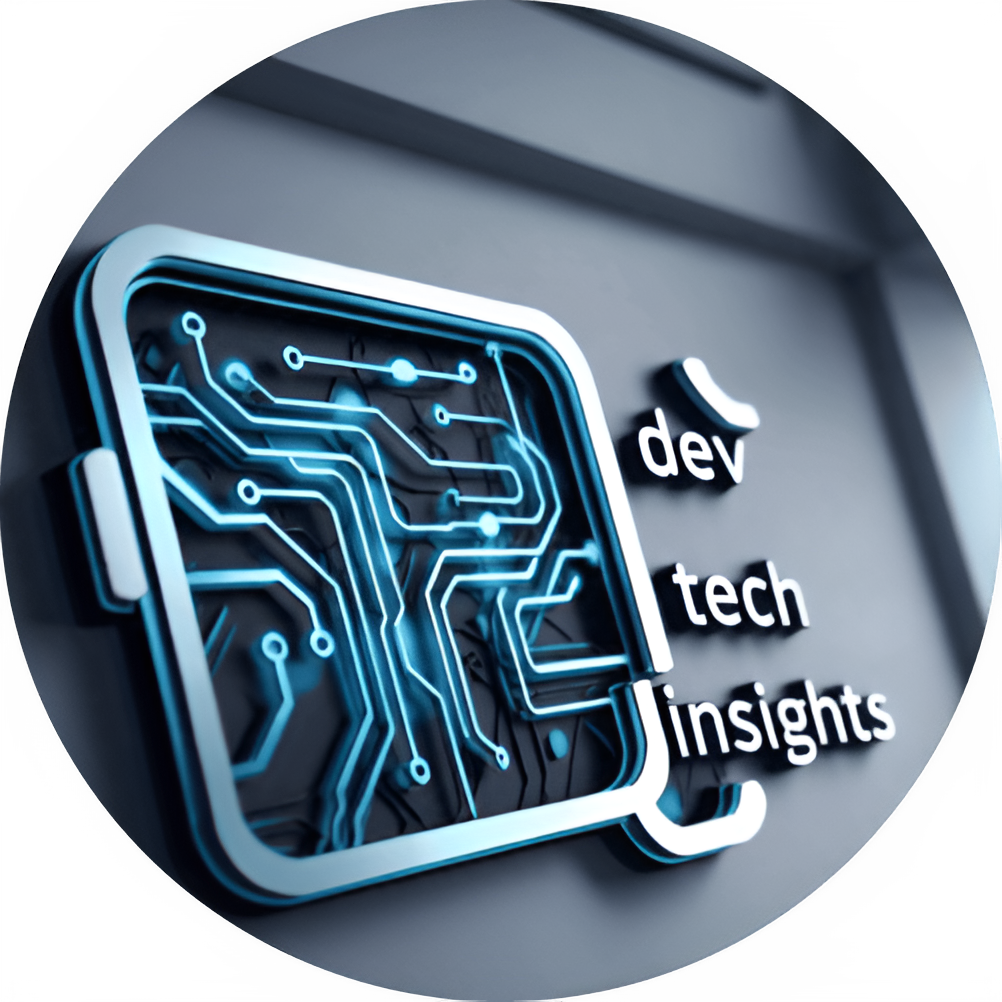
How AI Will Change the Role of Web Developers in the Next 5 Years
Table of Contents
Introduction
The world of web development is evolving faster than ever — and artificial intelligence is no longer just a buzzword. From writing code to generating complete UI designs, AI is becoming a real partner in the development process. Over the next five years, these tools won’t just speed up your workflow — they’ll redefine your role as a web developer entirely.
Imagine debugging a complex JavaScript function while an AI assistant predicts the issue in real time. Or designing a responsive website where AI suggests optimal layouts based on user behavior data. The lines between “developer,” “designer,” and “data analyst” are about to blur, and those who adapt will thrive in this AI-driven era.
In this article, we’ll explore exactly how AI will change your work as a web developer by 2030, the opportunities it will unlock, and the skills you’ll need to stay ahead.
The Current State of AI in Web Development
Before we can predict how AI will transform the role of web developers in the next five years, we need to understand where things stand today.
Currently, AI is already embedded in multiple stages of the development lifecycle:
- Code Generation & Autocomplete: Tools like GitHub Copilot, Tabnine, and Codeium can generate entire code snippets or complete functions from short prompts, saving hours of manual work. Learn more about AI coding assistants here.
- Automated Testing & Debugging: AI-powered tools such as DeepCode and Snyk automatically detect vulnerabilities and bugs in real time. Explore best JavaScript debugging tools here.
- UI/UX Design Assistance: Platforms like Uizard and Galileo AI can turn text descriptions into UI mockups. Check out AI tools for web designers that save time.
- Content & SEO Optimization: AI-driven CMS integrations analyze keyword usage to help sites rank better. Find winning keywords with our free SEO keyword generator.
- Chatbot & Feature Integration: Developers can easily embed AI chatbots into web applications.
In short, AI isn’t just helping developers — it’s quietly reshaping the expectations of speed, accuracy, and creativity in the web development world.

The Next 5 Years — Predicted Changes in Web Development Roles
Over the next half-decade, AI won’t just be an optional tool — it will become a standard part of the web development workflow. Here are the major shifts we can expect:
1. AI as a Co-Developer
Instead of treating AI as a fancy autocomplete, developers will work with AI almost like a teammate. It will:
- Suggest optimal architecture for projects.
- Handle repetitive coding tasks.
- Flag inefficiencies before they become performance issues.
2. Focus on Problem-Solving, Not Syntax
With AI generating most of the boilerplate code, developers will spend less time remembering exact syntax and more time understanding business logic, user experience, and problem-solving at a higher level.
3. Hybrid Roles Will Become Common
Traditional role boundaries will blur — a “web developer” may also be expected to handle light design work, content integration, and even data analysis, all assisted by AI-driven tools.
4. Faster Development Cycles
AI will enable “concept to deployment” timelines to shrink dramatically. A landing page that once took days to build might be completed within hours.
5. Continuous Learning Will Be Mandatory
As AI evolves, so will its capabilities — meaning developers will need to adapt to new tools, workflows, and best practices every year. Those who resist change risk becoming obsolete.
In short, AI will free developers from repetitive, low-value work and push them toward higher-level decision-making, creative problem-solving, and cross-disciplinary collaboration.

Skills Developers Will Need to Thrive in the AI Era
As AI takes over repetitive tasks and generates large parts of application code or UI, the value of a developer will shift from typing to deciding. Here are the concrete skills that will matter most — with practical ways to get them and projects you can build to practice.
1. Prompt Engineering & AI Tool Fluency
- What it is: Writing precise prompts to get reliable, useful outputs from AI models (code, design, tests).
- Why it matters: The better your prompt, the fewer iterations you need, and the less post-editing the AI output requires.
- How to practice: Recreate common development tasks (generate components, write tests, create API specs) using multiple prompts and compare outputs. Keep a prompt library.
- Project idea: Build a small internal “AI assistant” that, given a user story, generates a component scaffold + test suite using an LLM API.
2. System & Architecture Design (Higher-level Thinking)
- What it is: Choosing the right architecture, patterns, trade-offs, and services — not just wiring components.
- Why it matters: AI can write code, but architects make systems reliable, scalable, and maintainable.
- How to practice: Learn patterns (microservices, serverless, event-driven), diagram systems, review postmortems of real outages.
- Project idea: Design and document a scalable, AI-augmented web app (include caching, observability, fallback for AI failures).
3. Data Literacy & Basic Machine Learning Concepts
- What it is: Understanding datasets, data quality, bias, feature engineering, and how models are trained and evaluated.
- Why it matters: You’ll integrate AI features, so you must know what data to feed them and how to evaluate outputs.
- How to practice: Learn basics of supervised learning, data cleaning, and metrics (precision/recall). Use small datasets to train toy models.
- Project idea: Build a simple recommendation microservice using collaborative filtering or embeddings and integrate it into a demo site.
4. Observability, Monitoring & AI Failure Handling
- What it is: Logging, tracing, and monitoring both application and AI outputs (latency, hallucination rates, confidence).
- Why it matters: AI will sometimes be wrong — you must detect, explain, and roll back faulty behavior automatically.
- How to practice: Add telemetry to a sample app; create alerts for anomalous model responses and build automated fallbacks.
- Project idea: Instrument a chatbot with logs, error-level tagging for hallucinations, and a fallback to a static FAQ when confidence is low.
5. Security, Privacy & Responsible AI
- What it is: Protecting user data, model outputs, and ensuring compliance (encryption, input sanitization, GDPR/privacy considerations).
- Why it matters: AI features often touch sensitive data and can introduce new attack surfaces (prompt injection, data leakage).
- How to practice: Study common attack vectors, use input validation, and implement least-privilege patterns for model access.
- Project idea: Harden an AI integration by adding token scoping, prompt sanitization, and a data retention policy.
6. Integration & API Orchestration
- What it is: Gluing AI services into existing stacks (APIs, queues, serverless functions), and orchestrating workflows.
- Why it matters: Real apps need robust pipelines: user input → preprocess → model → postprocess → store → notify.
- How to practice: Build end-to-end flows with retries, queuing, backpressure handling, and idempotency.
- Project idea: Create an automated content pipeline: user draft → AI rewrite → SEO audit → publish queue.
7. Testing & Validation for AI-Generated Code
- What it is: Creating test strategies for generated code: unit tests, property tests, contract tests, and behavior tests.
- Why it matters: Generated code can introduce subtle bugs; tests are your safety net.
- How to practice: For every AI-generated component, write tests first (TDD) and compare behavior across multiple AI outputs.
- Project idea: Build a test harness that runs generated components against a canonical spec and reports discrepancies.
8. Soft Skills: Communication, Ethics & Product Sense
- What it is: Explaining AI decisions to stakeholders, negotiating trade-offs, and designing features with user needs and ethics in mind.
- Why it matters: As AI increases automation, decision-making, prioritization, and stakeholder buy-in become core developer responsibilities.
- How to practice: Lead small cross-functional projects, run design critiques, document ethical risk assessments for AI features.
- Project idea: Draft a short “AI use policy” for your site that explains how AI is used, where data goes, and how users can opt out.
Practical Learning Path (6–12 months)
- Months 0–2: Learn prompt engineering + LLM basics. Build a prompt library and simple assistant.
- Months 3–4: Focus on observability and testing for AI outputs. Add monitoring to projects.
- Months 5–6: Study system design and data literacy; build a small production-ready AI integration.
- Months 7–12: Harden security/privacy, expand to multi-model orchestration, and lead a small team project integrating AI features.

Tools & Platforms That Will Matter
In the next five years, the most in-demand web developers won’t just know how to code — they’ll know which AI-powered tools to use, when, and why. Here’s a curated list of categories and examples that are likely to shape the industry.
1. AI Coding Assistants
- Examples: GitHub Copilot, Codeium, Tabnine, Amazon CodeWhisperer.
- Role: Real-time code generation, architecture suggestions, and context-aware refactoring.
- Why They Matter: They’ll become the default IDE add-on for most developers. Not knowing how to leverage them will be like not knowing how to use a debugger.
2. AI-Powered UI/UX Tools
- Examples: Uizard, Galileo AI, Figma AI features.
- Role: Transform text or sketches into interactive UI prototypes within minutes.
- Why They Matter: Speeding up the design-to-development pipeline will be critical for faster releases.
3. AI Testing & QA Automation
- Examples: Testim.io, mabl, Autify.
- Role: Generate and run automated tests from user stories or live user behavior.
- Why They Matter: Cuts down regression testing time and reduces human error.
4. SEO & Content Optimization
- Examples: Surfer SEO, Clearscope, Frase.
- Role: AI-driven keyword suggestions, content scoring, and on-page optimization.
- Why They Matter: Organic visibility will depend on integrating SEO from day one.
5. AI Chatbot & Assistant Frameworks
- Examples: Rasa, Botpress, LangChain, OpenAI API.
- Role: Enable custom conversational agents, help desks, and in-app assistants.
- Why They Matter: Expect almost every modern site to have a conversational interface by default.
6. Data & Model Hosting Platforms
- Examples: Hugging Face, Replicate, Google Vertex AI.
- Role: Host, fine-tune, and deploy AI models at scale.
- Why They Matter: Developers will integrate ready-made models without retraining from scratch.
7. AI Image & Asset Generation
- Examples: Midjourney, DALL·E, Leonardo AI, Grok image tools.
- Role: Generate custom visuals, icons, and assets on demand.
- Why They Matter: Design bottlenecks will vanish as developers generate assets themselves.
8. Observability & AI Monitoring Tools
- Examples: Langfuse, Humanloop, Arize AI.
- Role: Track prompt performance, hallucination rates, and latency.
- Why They Matter: Keeping AI reliable will be as important as keeping a server online.
Pro Tip:
Don’t just learn the tools — learn why they exist and when to use them. Trends will shift, but the underlying principles (speed, reliability, usability) will stay constant.

Challenges & Ethical Considerations
While AI promises speed and efficiency, it also brings new risks that web developers can’t afford to ignore. In the next five years, the biggest competitive advantage might not just be knowing how to use AI — but knowing how to use it responsibly.
1. Over-Reliance on AI
- Risk: Developers may depend too heavily on AI outputs, leading to less critical thinking and weaker problem-solving skills over time.
- Mitigation: Treat AI suggestions as drafts — always review and validate logic before pushing to production.
2. Security Vulnerabilities in AI-Generated Code
- Risk: AI models can introduce insecure patterns (e.g., SQL injection risks, improper authentication flows).
- Mitigation: Use static analysis, penetration testing, and AI-aware security scanners before deploying AI-written code.
3. Data Privacy & Compliance
- Risk: Some AI services process user data in ways that could violate GDPR, CCPA, or other privacy laws.
- Mitigation: Understand your AI provider’s data policies, anonymize sensitive inputs, and give users clear opt-out options.
4. AI Bias & Fairness
- Risk: Models can inherit or amplify biases from their training data, leading to discriminatory outputs.
- Mitigation: Audit datasets, add bias detection tools, and regularly test outputs for fairness across different demographics.
5. Intellectual Property Issues
- Risk: AI-generated code or assets may accidentally infringe on copyrighted material.
- Mitigation: Use AI tools with clear licensing terms, and document the source of AI-generated work.
6. Model Hallucinations & Inaccuracies
- Risk: AI can produce convincing but incorrect answers — dangerous in critical systems.
- Mitigation: Implement validation layers, redundancy (multiple models), and human review for high-impact features.
7. Environmental Impact of AI Compute
- Risk: Large AI models require significant computational resources, contributing to energy consumption.
- Mitigation: Use smaller, task-specific models where possible, and optimize inference pipelines.
Remember: In the AI era, the best developers will be part engineer, part ethicist, and part watchdog. The ability to spot, fix, and prevent AI-driven problems will be just as valuable as building new features.

Action Plan — How Developers Can Prepare Now
AI in web development isn’t a distant future — it’s here. The next five years will reward developers who start preparing today. Here’s a step-by-step action plan to future-proof your career.
Step 1: Master the Fundamentals
- Why: AI tools are most effective when paired with strong core skills.
- What to Do: Deepen your knowledge of HTML, CSS, JavaScript, server-side programming, and database management.
- Pro Tip: Use AI to accelerate learning, not replace it.
Step 2: Learn AI Toolchains
- Why: Knowing how to integrate AI tools will become as important as knowing how to set up a dev environment.
- What to Do: Experiment with GitHub Copilot, AI-powered design tools, and automated testing platforms.
- Pro Tip: Start with free trials and open-source alternatives to avoid high costs.
Step 3: Develop Cross-Disciplinary Skills
- Why: Future dev roles will be hybrid, blending coding, design, content, and data analysis.
- What to Do: Learn the basics of UI/UX, SEO, and analytics dashboards.
Step 4: Build Ethical Awareness
- Why: Users and companies will expect developers to anticipate and prevent AI risks.
- What to Do: Stay updated on AI ethics, bias detection methods, and privacy laws like GDPR.
Step 5: Create an AI-Enhanced Portfolio
- Why: Employers and clients will want proof of real-world AI skills.
- What to Do: Build personal projects showcasing AI integrations — like AI-powered chatbots, smart dashboards, or code automation tools.
Step 6: Network in AI-Driven Communities
- Why: AI trends move fast, and online communities are often ahead of formal education.
- What to Do: Join AI developer forums, Discord groups, and attend webinars from leading AI companies.
Step 7: Commit to Lifelong Learning
- Why: AI will evolve faster than traditional tech stacks.
- What to Do: Schedule monthly “learning sprints” to explore new tools, APIs, or AI research papers.
Quick Checklist for the Next 30 Days:
✅ Set up AI code assistant in your IDE.
✅ Create a simple AI-powered feature in a side project.
✅ Follow 5 AI-focused thought leaders on LinkedIn/X.
✅ Audit your current workflows to see where AI can save time.
Download Our PDF Guide on AI in Web Development Here
This guide provides a deeper dive into the integration of AI in web development, including practical tips and resources for developers looking to enhance their skills.

Frequently Asked Questions
1. Will AI replace web developers completely?
No. AI will automate repetitive tasks, but human creativity, problem-solving, and contextual decision-making will remain essential. Developers will shift from writing every line of code to guiding AI and ensuring quality.
2. Which AI tools should web developers learn first?
Start with AI coding assistants like GitHub Copilot, then explore AI design tools like Figma AI and automated testing platforms like Testim.io. These provide the fastest productivity boost with minimal learning curve.
3. How can developers stay relevant in the AI era?
Keep learning core web technologies, integrate AI into projects, stay informed about AI ethics, and actively participate in AI developer communities. Versatility will be your best asset.
4. Are there risks in using AI-generated code?
Yes. AI-generated code can contain security vulnerabilities, inefficient logic, or even plagiarism risks. Always review outputs, run tests, and ensure compliance with licensing terms before deployment.
5. What skills will be most valuable in 2030 for web developers?
Hybrid skills — combining coding, AI integration, UI/UX design, and data analysis — will be in high demand. Ethical oversight and the ability to work with AI responsibly will also be critical.







